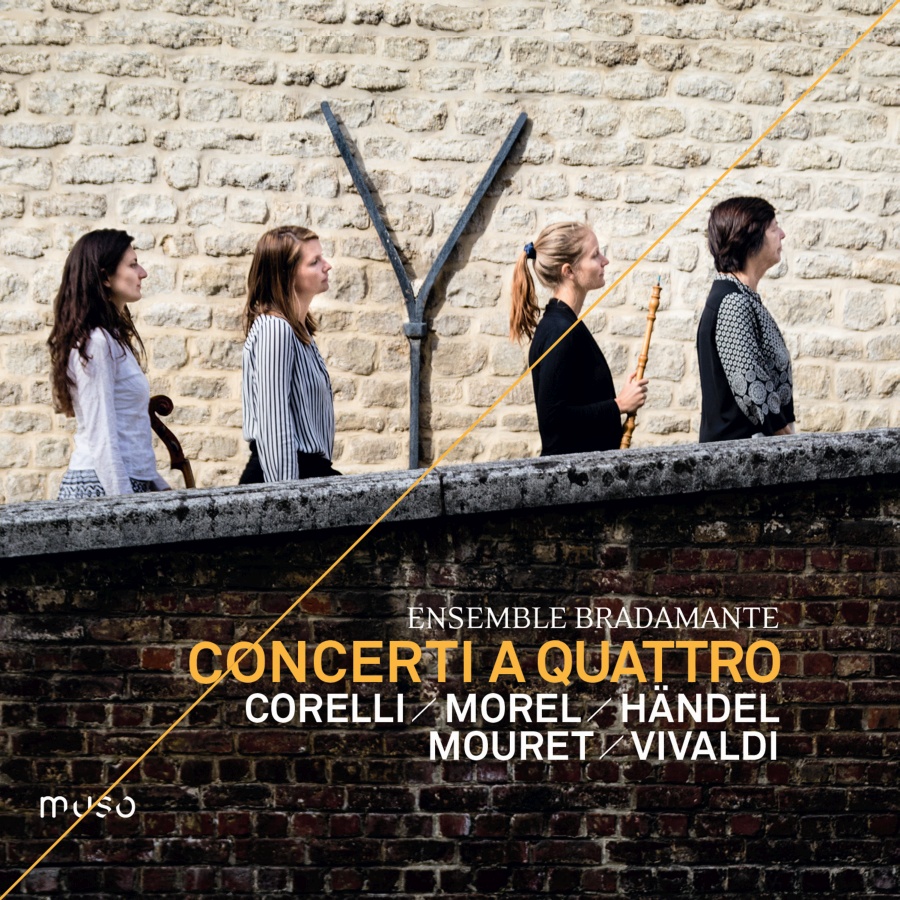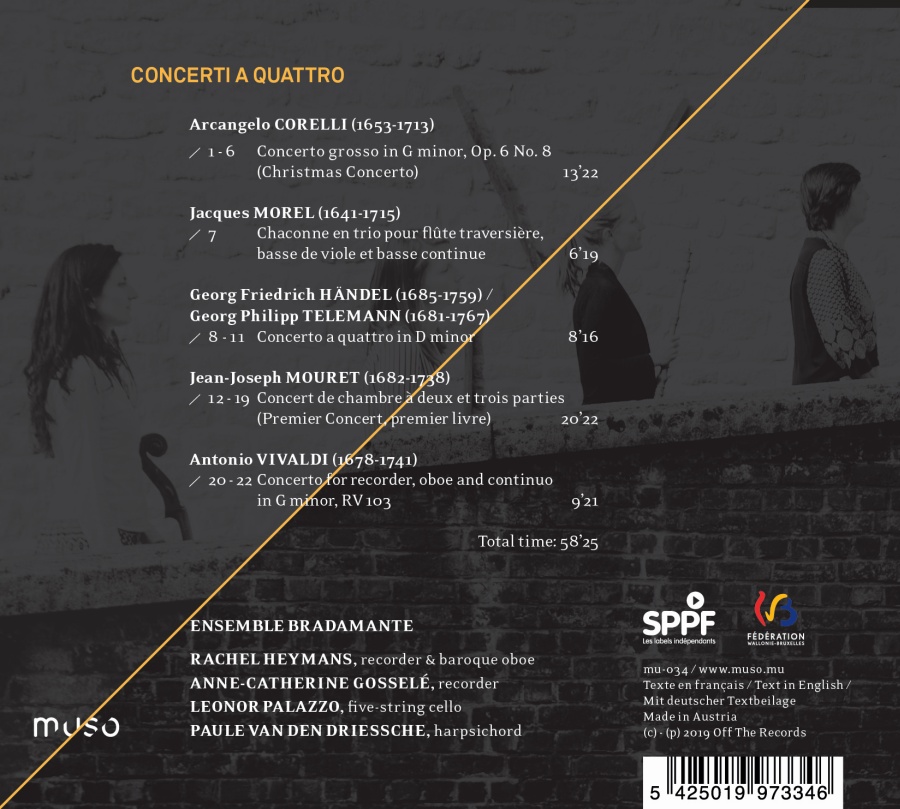
tytuł
Concerti a quattro
wykonawcy
Ensemble Bradamante
nr katalogowy
MU-034
opis
The Ensemble Bradamante offers us, for this recording of the Concerti a quattro for recorder, oboe, cello and harpsichord, an original perspective and one of the highest interest, with works of composers from different countries who yet follow the same logic, that of highlighting each instrument separately, distancing themselves in this way from the trio sonata to draw closer to the concerto a molti stromenti, promoted notably by Vivaldi and Telemann. • The journey begins in Italy with Arcangelo Corelli, who vastly developed the musical form of the concerto grosso, this latter exercising a major influence on all music in eighteenth-century Europe. One of these concerti, theConcerto fatto per la notte di Natale, was especially well received and has become a great classic of the Christmas repertory. • The journey continues with French and Germanic composers. First of all, the Chaconne en trio by Jacques Morel, a pupil of Marin Marais, which by its style resembles the dialogue concertos of this programme, and highlights the high register of the too rare five-stringed cello. There follows the Concerto a quattro by Handel, discovered in 1931 in Bavaria, its authorship recently called into question as it seems it must be attributed to Telemann; the musical style is marked by an intense expressivity, and could well have come from the pen of either composer. We then return to France with the remarkable Concert de chambre of Jean-Joseph Mouret, a man of the Provence region exiled to Paris known above all for his stage music (lyric tragedies, heroic ballets). • Finally we come back to Italy with theConcerto RV 103 by Antonio Vivaldi, featuring the lyrical recorder in the solo parts while the oboe oscillates between the roles of ripieno and of partner in the sections of dialogue. With a three-movement structure, the concerto ends in a whirlwind of colour. • The Ensemble Bradamante, through the choice of works and the orchestration of some of them, pursues a path of discovery, of appropriation without preconceptions of a diversified repertory. It offers its listeners a bouquet of pieces of chamber music with various, intense characters, where the warm, friendly dialogue between the wind instruments is supported by the rich sound of the continuo.
nośnik
CD
gatunek
Muzyka klasyczna
producent
Muso
data wydania
08-01-2020
EAN / kod kreskowy
5425019973346
Produkt nagrodzony:
ICMA 'Nominee' (2020)

(Produkt nie został jeszcze oceniony)
cena 79,00 zł
lubProdukt na zamówienie
Wysyłka ustalana indywidualnie.
Darmowa wysyłka dla zamówień powyżej 300 zł!
Darmowy kurier dla zamówień powyżej 500 zł!
sprawdź koszty wysyłki















